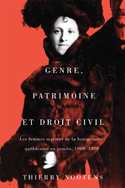Stephen R. Alton, Texas A & M School of Law, has published Dr. Jekyll & Mr. Holmes: A Tale of Two Testaments as a Texas A& M University School of Law Legal Studies Research Paper. Here is the abstract.
This article takes the form of an epistolary exchange across the centuries, comparing and contrasting two noted wills in Victorian literature. The first of these testaments is the final will of Dr. Henry Jekyll, in Robert Louis Stevenson’s The Strange Case of Dr. Jekyll & Mr. Hyde; this will bequeaths the doctor’s estate to his friend and attorney, Gabriel John Utterson. The second testament is the putative will of Jonas Oldacre, in Arthur Conan Doyle’s The Adventure of the Norwood Builder; this will bequeaths Oldacre’s estate to the young solicitor who drafted the will, John Hector McFarlane. Taken together, these two testaments raise the issues of the testator’s capacity and intent to make the will, undue influence and bequests to attorneys (notably to the drafting attorney), due execution of the will, and the effect of the beneficiary’s possible murder of the testator. A comparison of these two fictional Victorian-era wills remains relevant today because the legal issues that these two testaments raised in 19th century England are still very much present in 21st century America.Download the article from SSRN at the link.






